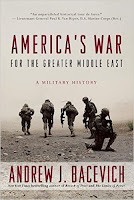.
I very well remember certain parts of my own military service. We all developed not only the ability, but also the habit of a super-quick nap whenever the opportunity arose. Two minutes time to sit at a table? Nap. Other guy left the car, went into the building to use the photocopy machine? Nap in the car. At the restroom in a stall? Nap.
That was during the times when there was a lot of stress, mostly when one was being trained, particularly during basic training.
The normal service as the opposite of stressful. Once I messed up my calendar and was on unauthorised leave - and nobody even noticed (my unit was way overstaffed at that time and personnel affairs was a mess).
On other days I simply enjoyed the warmth of the sun and watched the scenery, kind of in a picnic mood. Serving as a soldier means in most jobs and most months to be bored most of the time. Even the supposedly overworked guys made sure they had their extra breaks.
Similarly, even ground combat troops on a mobile warfare campaign on a day with much movement would wait most of that time. Wait for something to happen, wait for orders, wait for moving again. Wait for hot food. Maybe they'd pull security as a picket, but that, too, would be essentially be about waiting for anything to happen. Usually a recall or relief.
Historically, even fully motorized forces aren't advancing all that quickly. 50 km/ day average for several days in a row is fast, 100 km/day average for several days in a row has yet to happen with larger forces. The actual movements may be twice as much as the distance gained, but the lesson is still that a tank's top speed of 70 kph or a lorry's top speed of ~90 kph does simply not translate into hundreds of kilometres advances or even only movements by entire brigades. Supply convoys may do this, but it's unheard of from combined arms formations.
The dominant activities of the personnel of a combined arms brigade on a campaign are thus going to be resting/waiting, sleeping, eating, personal hygiene - whereas actually moving forward in a motor vehicle may take less time than chowing on a typical day.*
Yet field manuals and writings about military theory or doctrine appear to focus mostly on what would be done while shooting or moving. The resting that may actually be more decisive (think of security efforts, physical exhaustion, officers collapsing after four days for want of sleep) is largely being treated as an affair that NCOs would take care of. As if it's some kind of basic activity of the trade that never makes a difference.
I began to treat it differently this year, for even though you may rest or wait, this doesn't necessarily apply to the opposing forces. Survivability, security and to some degree secrecy (protection against surveillance) during resting and waiting may be more important than the synchronisation of a fix + left hook movement or similar action-focused things.
A force that dissolves during a rest won't be of use when there's an opportunity for action. This goes beyond a call for proper security efforts. It's about paying attention to the phases of relative inactivity as abut as important as the actions. Navies have the "fleet in being" idea. That's the idea that a fleet in a harbour, ready to cruise and offer battle, still has a huge effect on the opposing forces despite its inaction. It forces them to deploy forces as a counter and it restricts their freedom of action because many actions would be too risky in face of that ready-to-hit-you "fleet in being".
I know of no equivalent term in land warfare theory or field manuals. There's no "brigade in being", the closest thing is a QRF (quick reaction force), but that's rather a fashionable term for "reserves". Reserves were once the centrepiece of land warfare art; they decisions where to keep, when to employ and when to disengage with reserves was most important, and to fix (keep busy) all opposing forces' reserves while still having considerable reserves ready for offensive action was considered THE decisive thing in battles.
I'm under the impression that this withered away during the Cold War, since the very wide frontages of the 25-26 divisions of NATO along the roughly 1,000 km wide Central European front(ier) seemingly allowed for no substantial reserves. Moreover, reserves are fractions of the total force ordered to wait, not the supposedly "busy" forces who are still waiting and resting most of the day. So there's a difference to what I was writing about above.
The recent blog post on the 'ink blot' approach to campaigning in conventional warfare was focused on this issue of entire battalion battlegroups doing nothing, and HOW and WHERE to do nothing. The WHY is about sustainability; neither troops nor material would allow for constant action. The idea was to not simply rest anywhere, but in chosen, specifically suitable places. Preferably with a useful spacing, uninterrupted radio comms, suitable choices of routes for evasive or aggressive marches and most importantly; some degree of protection against long range fires and aggressive small forces. Preferably, the location should be secured against surprise raids with little effort, allowing a rather large share of the troops to rest, restock, maintain and repair instead of trying to protect themselves against terrible surprises.
I understand that many people - including readers - think differently and focus on the "action" part. Yet judging by time, the "action" part is a tiny share of a campaign. Soldiers don't shoot about 99.99% of the time, and don't move about 80-90% of the time during a conventional war campaign.
S O
*: Though depending on the stress level, soldiers may also develop a habit of speed-eating. My record was a full meal worth of 20 minutes in four minutes. Medical doctors would probably not approve.
.








